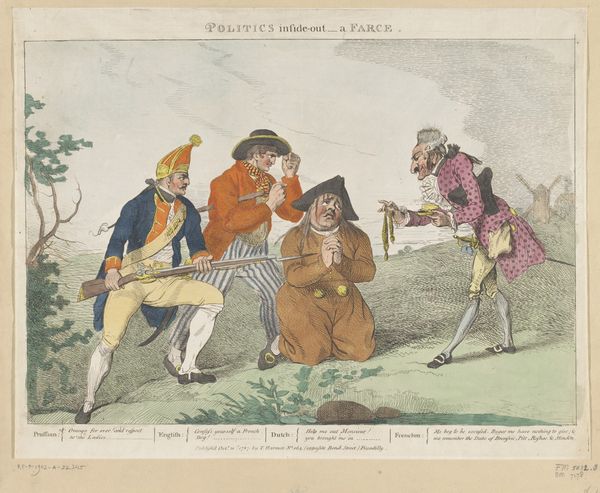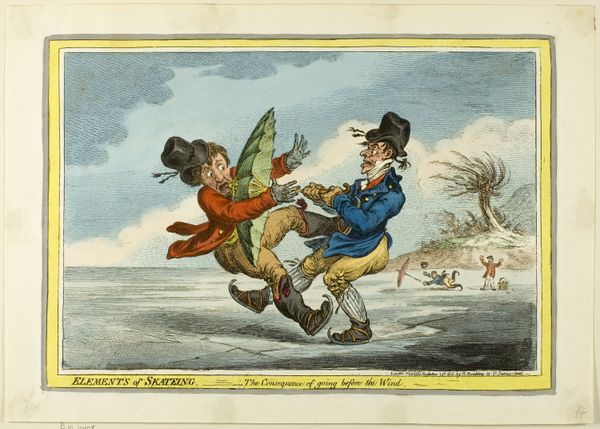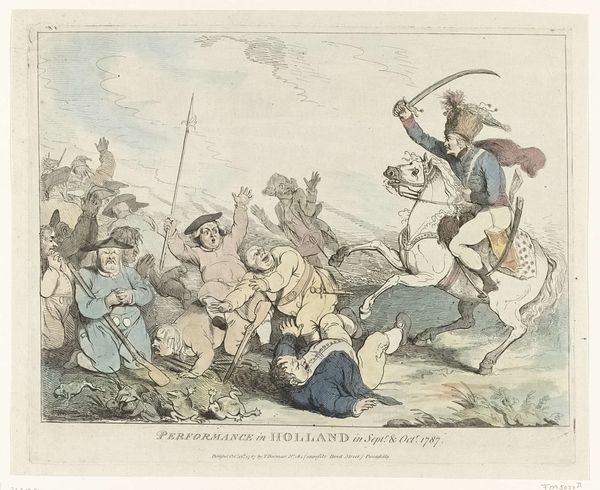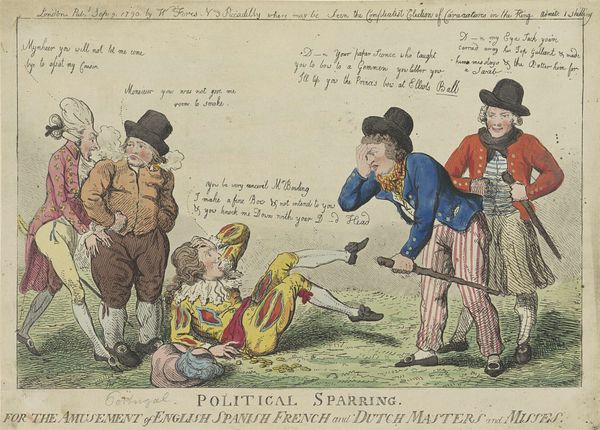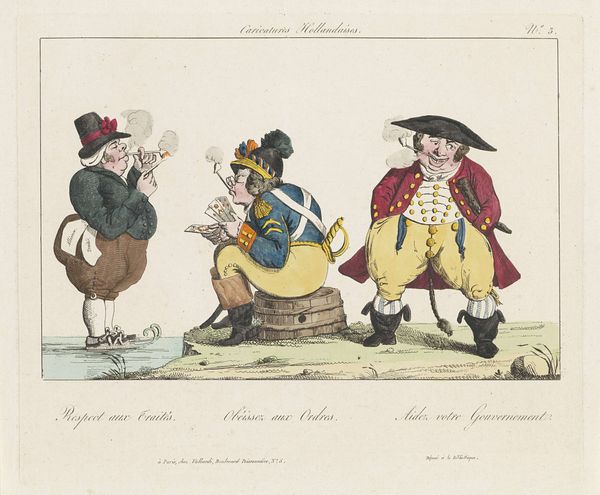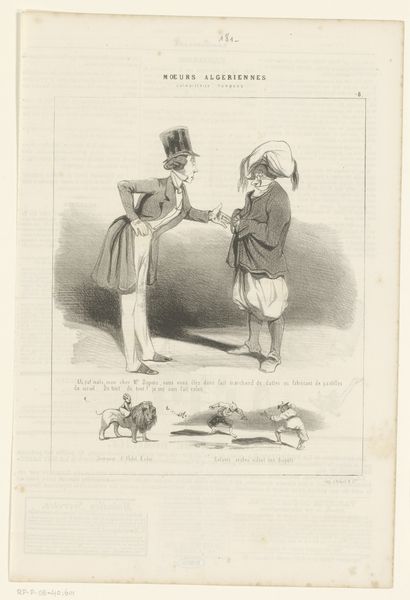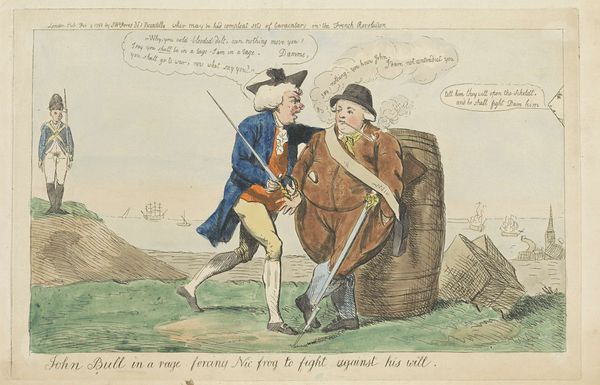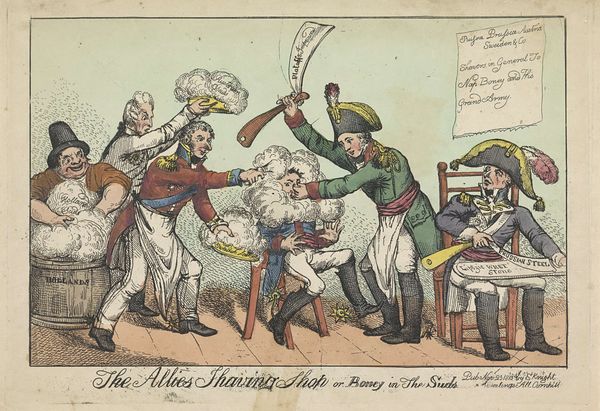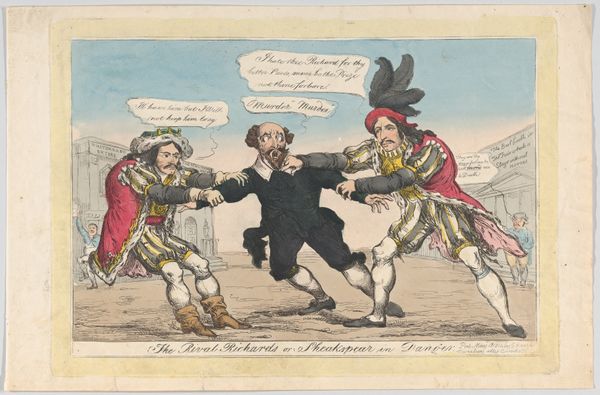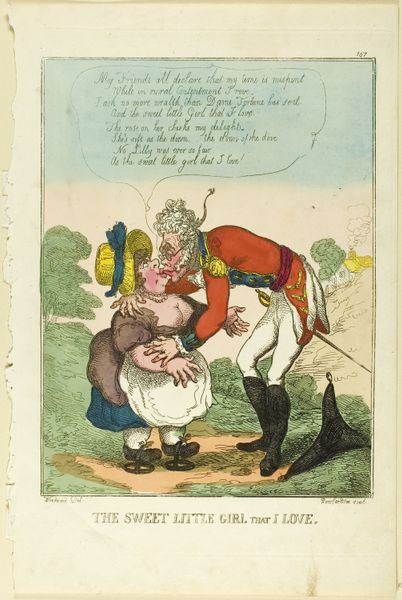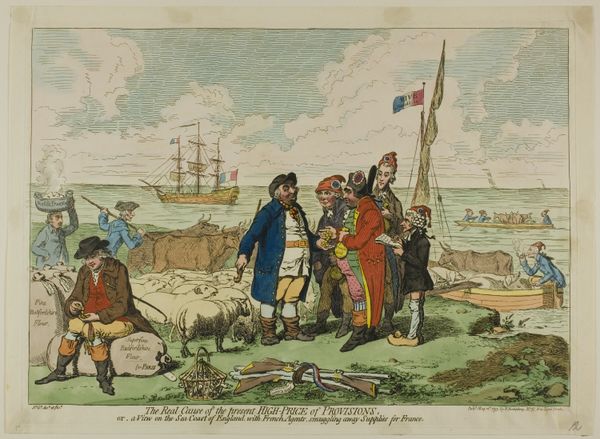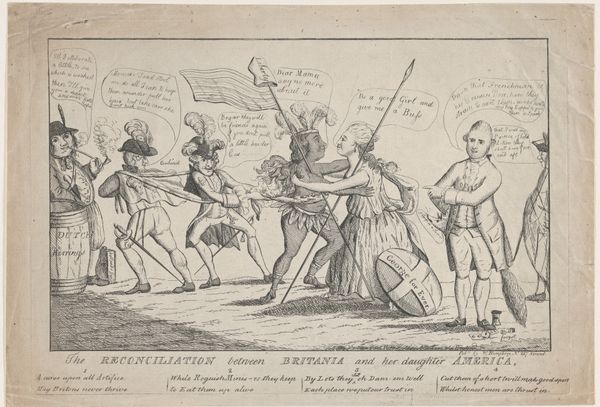
coloured-pencil, print, etching
#
coloured-pencil
#
neoclassicism
# print
#
etching
#
caricature
#
coloured pencil
#
watercolour illustration
#
genre-painting
#
history-painting
#
watercolor
Dimensions: height 400 mm, width 510 mm
Copyright: Rijks Museum: Open Domain
Curator: This coloured etching and print, possibly from 1787, is called "Een politieke klucht," or "A Political Farce," by Johann Heinrich Ramberg, housed right here at the Rijksmuseum. Editor: A farce indeed! My immediate impression is one of sharp contrasts—exaggerated features, strained postures... there's an unsettling dynamism at play. What's your take on the composition? Curator: The piece demonstrates a rather canny use of line. Look at how Ramberg's use of precise strokes delineate form, creating distinct planes and drawing the eye toward key focal points, such as the bowed figure at the center. Notice also how the artist exploits shading to create a remarkable three-dimensionality. Editor: I'm drawn to the text at the bottom – those are the nations portrayed here: Prussian, English, Dutch, and of course the condescending Frenchman offering to bestow jewelry if his demands are met. It screams colonial power dynamics and the era's anxieties about shifting allegiances. This wasn't just aesthetic; it was a blatant political commentary. Curator: Precisely. The formal elements all converge to serve the satirical intent. Observe how the meticulous rendering, paradoxically, enhances the caricature, amplifying the critique. There’s an unsettling elegance to its execution, wouldn’t you agree? Editor: "Elegant" might be too generous. The figures are deliberately grotesque, not idealized. Ramberg isn't just poking fun, he is dissecting the hypocrisy and power struggles of the era through visual distortion. Look at the defeated posture of the Dutchman kneeling, versus the predatory Frenchman – these choices aren't accidental; they’re social critique rendered in ink. Curator: Agreed. But to disregard the artistry would be to miss a critical layer of the piece's efficacy. It's through Ramberg's mastery of form that the satire achieves its memorable sting. The balance itself holds inherent value irrespective of time. Editor: I appreciate that, and I agree that an artwork must be dissected both formally and contextually for meaning to be gleaned, as we've shown here today. Curator: Indeed, a complete analysis offers both a richer experience, as well as better access to the intention and experience of the piece itself.
Comments
No comments
Be the first to comment and join the conversation on the ultimate creative platform.
